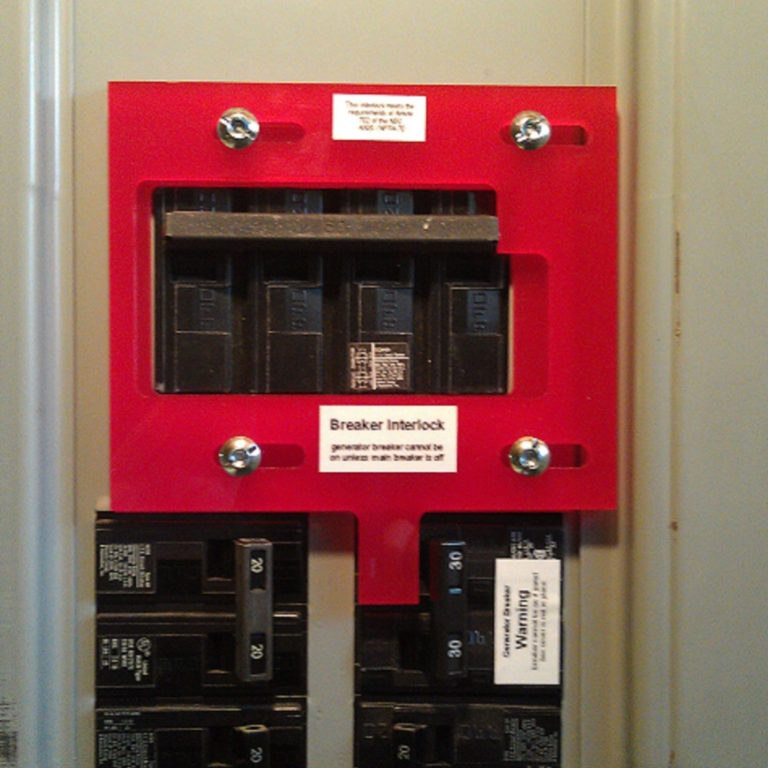
How do Generator Interlocks work?
Interlocks are a simple mechanical solution that allows a generator to be hooked up to an existing electrical panel. The mechanical interlock requires the main breaker to be turned off before the generator can be hooked up and a dedicated generator breaker can be turned on. This does require knowledge of your electrical loads and a properly sized portable generator. The generator size may require breakers to be turned of in the house to reduce the load on the generator.
Items required:
- Properly sized generator plug mounted externally on the house, typically 30 or 50 amp for a residential house
- Breaker for the generator
- Interlock kit.
- Properly sized generator cable to plug into the house (30 or 50 amp
- Portable generator
Not all panels have the space to add a generator breaker so this may not be an option without a circuit breaker panel replacement. Choosing a position for the plug within 6 feet of the panel is the cheapest solution, it is significantly cheaper to get a longer generator cord to position the generator in the desired position than extending the wiring for the plug.
When the power goes out, it requires the generator to positioned in an outdoor spot, the generator cable plugged into the generator and the generator plug. The generator needs to be started and then the breaker for the house needs to be turned off, the interlock will then allow the generator breaker to be turned on. If there are large loads like electrical heaters in the house these may have to be turned off or their breakers turned off depending on the size of the generator. When the power is restored this operation has to be reversed.

©Copyright. All rights reserved.
We need your consent to load the translations
We use a third-party service to translate the website content that may collect data about your activity. Please review the details in the privacy policy and accept the service to view the translations.